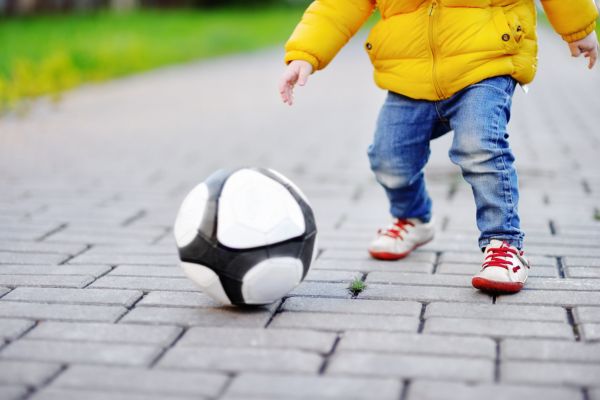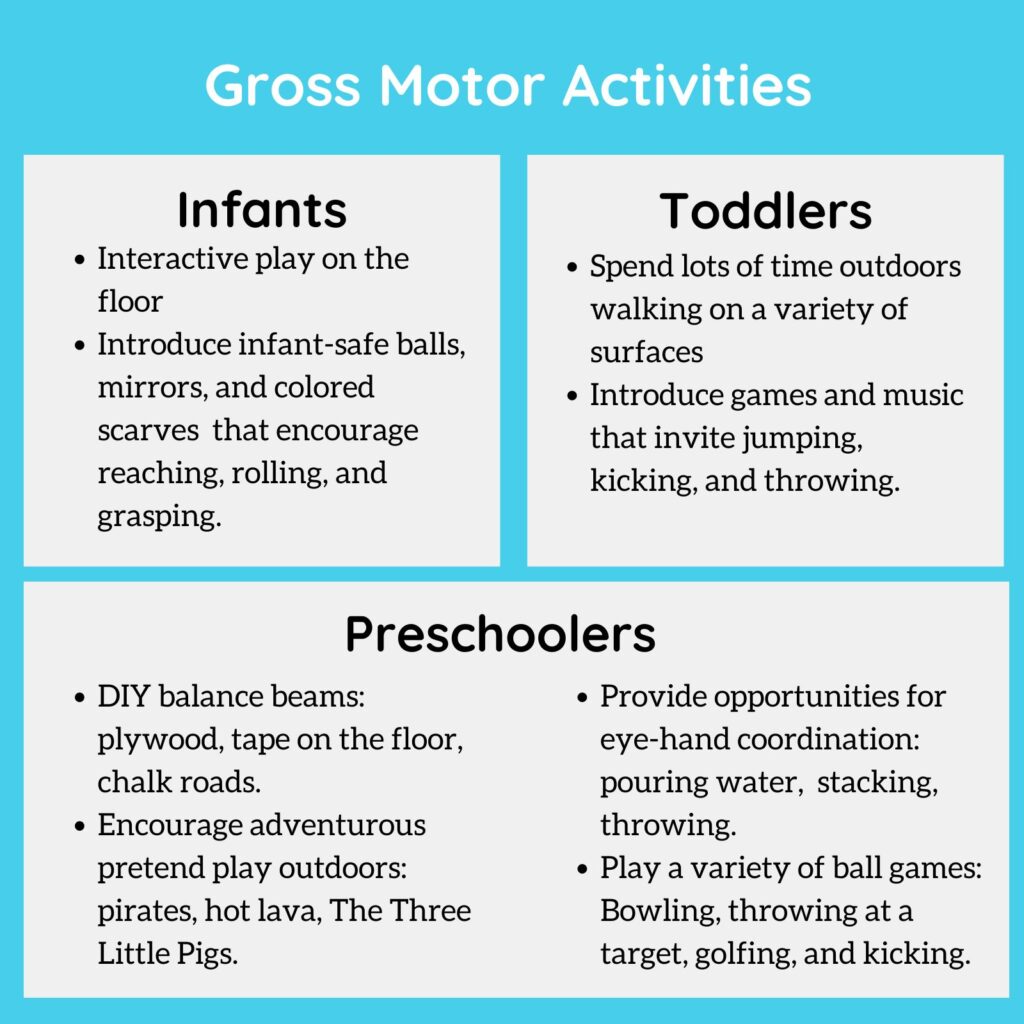
Human beings are incredible at using their bodies for a variety of tasks. Just watching different sports is a fantastic way to celebrate the human body: gymnasts as they leap and twirl, surfers as they balance on a surfboard, golfers as they swing with precision, swimmers as they race through water, and members of track team as they run at incredible speeds. While everyone may not grow up to be a professional athlete, we still use our bodies for almost all tasks in our day. We encourage educators and caregivers to foster the development of children’s gross motor skills that relate to their balance, ability to move in a variety of scenarios, eye-hand coordination, core strength, and sense of space.
Gross motor development in young children is very closely tied to their ability to participate in emotional connection and play. In the first weeks of life, infants turn their heads and kick their little arms and legs as they seek the gaze of a loving adult. As children grow, adults can facilitate their exploration on a safe, clean mat on the floor that allows children to reach, roll, push on their forearms, and develop the muscles that will later allow them to crawl. The development of these muscles is closely tied to other areas of development in young children. For example, when a child is able to reach for items, they can explore cause-and-effect, and hear the words for the items for which they are reaching. As they learn how to crawl, they are able to engage in more serve-and-return interactions that are so crucial for their early brain development.
As children move from crawling to walking, their world becomes much bigger. They start to learn how to run, hop, kick, throw, ride tricycles and more. Indeed, it can sometimes be hard to keep up with children’s need for movement, as 2- and 3-year-old children are known for being full of energy. This exploration is closely tied to the development of their sense of independence and confidence, as well as their ability to socialize with peers. Adults can support this vibrant phase by including opportunities for movement throughout the day. The easiest way to ensure this is to spend lots of time outdoors, as this gives children the space to move their bodies safely.
At Rayz Kidz, we believe in a balanced mix of free play, guided play, and games, and movement can and should be a part of all of those types of play. To complement a long morning of playing outdoors, educators can intentionally plan materials and activities that encourage various gross motor skills. For example, they can invite children to a “Flower Tea Party” to practice their eye-hand coordination as they pour tea. Or children can engage with chalk, and educators can extend their play with one of our many chalk activities that encourage balance and coordination, such as “The Little Engine that Could: Train Tracks” and “Unplugged Coding”. And of course, if working with a group of children, you can invite them to play “Grasshopper Races” to practice jumping or “Tin Can Bowling” to practice rolling balls into a target. All of these games are great for other areas of development, so educators and caregivers can feel secure that they are also teaching important content for children’s cognitive, language, social-emotional and academic development.
